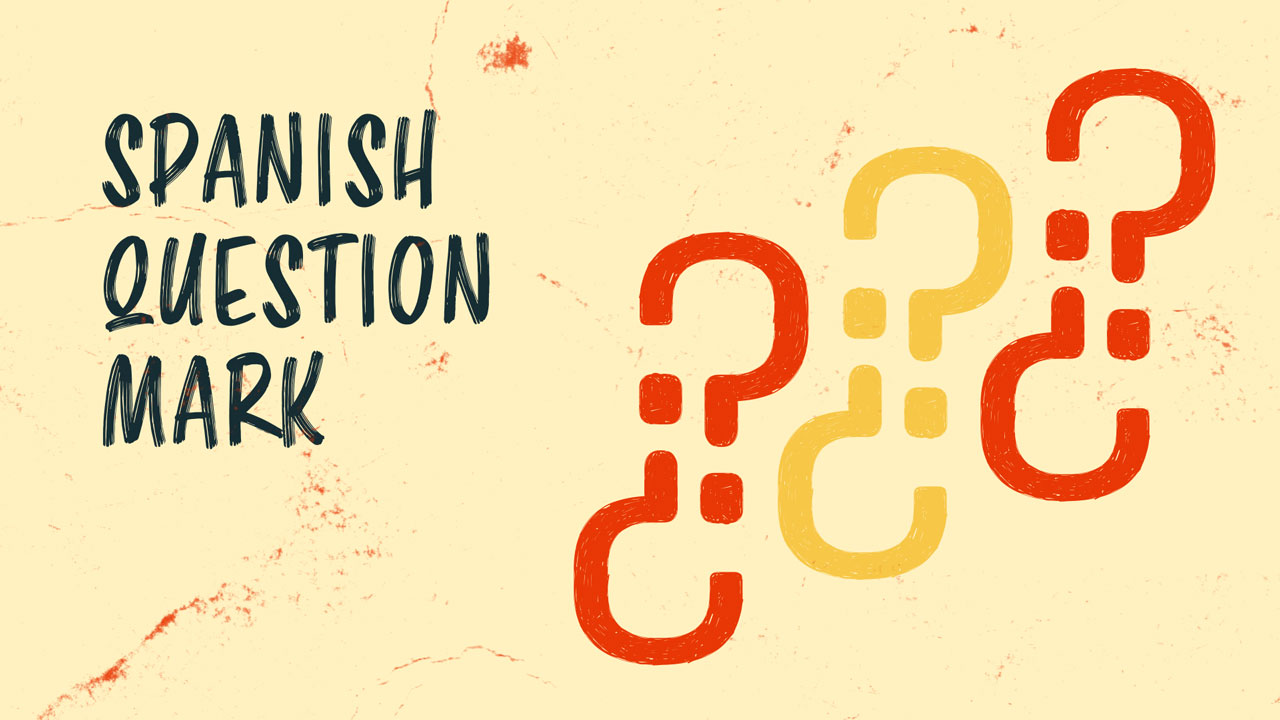The Spanish Question Mark: ¿How Do You Use it?
The inverted Spanish question mark (¿) is undoubtedly one of the most unique aspects of the Spanish language. In fact, Spanish is the only major language that uses the upside-down question mark!
So why is it used? I wondered just this when I began learning Spanish, but now I have grown to love it! Let me tell you why.
Here’s me in Spain, ready to ask questions!
Table of contents
Spanish Questions and Why the Spanish Question Marks Are Useful
You’ll often notice that Spanish question sentences or question clauses are surrounded by two question marks (¿ ? – one upside-down and one right-side-up, by English standards).
First, if you haven’t already, check out our article about Spanish questions for some basics on how to form questions in Spanish.
Now that we know how to form basic questions, we know that there are two ways to make a question in Spanish:
- By using a question word (ex. dónde, “where?”).
In fact, unlike English, you don’t need to change anything about the structure of the sentence or the grammar to make a statement into a question. Here’s what I mean:
Statement: Quiere comer pan. (“He/she wants to eat bread.”)
Question: ¿Quiere comer pan? (“Does he/she want to eat bread?”)
The only real difference between reading these two sentences aloud is that the second one will have rising intonation at the end. Otherwise, notice how nothing is different, in terms of the words. Luckily, we have the inverted question mark at the beginning signaling to us that the sentence is a question and we need rising intonation!
Here’s a bonus Spanish question tip: Spanish likes to omit subjects when they’re understood through context, but in this question, it is possible to add the subject for clarification or emphasis. So it’s possible to say things like ¿Quiere ella comer pan? or ¿Ella quiere comer pan? (“Does she want to eat bread?”). The former would be more likely for clarification (since quiere could also refer to él [“he”] or usted [formal “you”]. The latter is more like “She [of all people!] wants to eat bread?”
By the way, remember how I said that it’s not always the full sentence surrounded by the question marks? When you have a longer sentence, it’s just the question clause that’s surrounded.
Here’s an example of what I mean: Sé tu edad, pero ¿cuántos años tiene él? (“I know your age, but how old is he?”)
If you’re eager for even more Spanish question phrases, check out our article about Spanish conversation starters and questions!
How to Type the Spanish Question Mark
So now you may be wondering how to type the Spanish question mark. If you’re using a keyboard in a Spanish-speaking country, odds are it’s on there directly. But don’t fret if not! You can type it even if you don’t have a special Spanish keyboard.
Now, things may change depending on what model of computer and settings you have, but by and large, here’s how you do it:
If you’re using a Windows computer, press Alt + 168 or Alt + 0191.
If you’re using a Mac computer, press Option + Shift + /.
You can type them on your smartphone, too!
If you’re using an Android, press the !#1 button, then the 1/2 button, and it’ll show up.
If you’re using an iPhone, hold down on the normal ? and the option to type the ¿ will appear.
Now, speaking of texting, keep in mind that when chatting casually online, Spanish speakers often omit the inverted question mark. So don’t be confused when you see a Spanish text ending in a single question mark!
Fun Facts about the Spanish Question Mark
Now, before we wrap up, I want to tell you some more interesting things about the Spanish question mark.
I’m sure you’ve noticed by now that Spanish also uses an inverted exclamation point (¡), which follows similar rules as the inverted question marl. One way to get more playful with your Spanish is combining any mixture of one or both of these when you’re expressing a question of surprise or exclamation.
For example, these are all possible ways to punctuate the fighting words “And who do you think you are?!”:
- ¡Y tú quién te crees?
- ¿Y tú quién te crees!
- ¿¡Y tú quién te crees!?
- ¡¿Y tú quién te crees?!
Also, the inverted question mark in Spanish is a fairly recent invention. Despite a long history of the Spanish language, it was only developed in the 1700s. While it’s taken a stronghold now, internet users are not the only ones flaunting its use. The Nobel laureate Pablo Neruda refused to use it in his writing!
Interesting, right?
Ready to Ask Questions?
Honestly, the Spanish question marks are so useful and fun, and now I hope you see why. They’ll really help you communicate better! So keep asking questions and keep going on your path to Spanish mastery. ¡Hasta luego! (“Bye for now!”)




Social